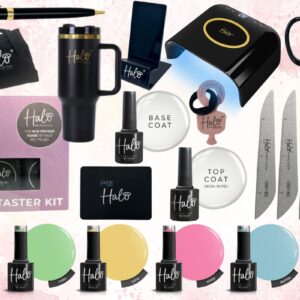How to choose the right nail course for your needs
By Michelle Brookes | 04 December 2023 | Expert Advice, Feature, Training

When starting out as a nail technician, you may find choosing a course overwhelming. Often, you may be so eager to start your journey that you don’t consider all the options available for the best beginning to your career.
There are three main course options when starting out:
1.An Ofqual registered qualification in nails.
Ofqual registered qualifications, such as VTCT & NVQ, are safe, reputable choices for many newbies to the industry. The training providers and colleges are required to follow a framework, and are vigorously checked throughout to ensure that they do this. The courses are generally six months to a year in duration are very in-depth, requiring home learning and lots of practice.
For anyone 16-19 these courses are fully funded in FE settings. For adult learners aged 19 or above, the courses can be paid for up front. Alternatively, students can choose to gain funds through an adult learner loan, which works similarly to a student loan. Tepayment is only needed once the student’s individual income reaches a certain amount. This amount can change, so it’s important to speak to your training provider to provide more information on this option.
The main course we offer in my academy is the OFQUAL registered VTCT Level 3 Nail Technology course. This course is available in many FE Colleges and academies in the UK and is suitable for a complete beginners. Students start with manicure, which, in my opinion, should be the first module of nail training – regardless of the training option chosen. Manicure teaches the basics: shaping and care of the natural nail, cuticle work and prep skills, application and perfect polishing. All of these skills prepare the students ready for when they start enhancements.
Following the manicure module, we move onto pedicures, nail enhancements, E-file and basic nail art. There are also theory units concentrating on health & safety, client care, health and wellbeing and retailing. Students then have the option to progress further into a more advanced course VTCT L3 Nail Services, which goes deeper into nail art techniques, sculpting, gel and business skills.

2.Accredited certification in nails.
If you’re seeking a quicker alternative, accredited courses may be a good option – but ensure you do your research. Is the accredited course following national occupational guidelines? Who is the accreditation by? Will your insurance cover you for that particular accreditor? You also need to consider the cost and timings, as if a course sounds too good to be true, it generally is!
It takes time to learn nails, so if you’re choosing this option, you only have a certificate in the subject and not a qualification. If changes to the industry come into place in the future, you may need to upskill. In my academy, we offer a range of ABT accredited courses and I ensure that the lessons are based on industry guidelines similar to the level 3 courses mentioned. We start at manicure and don’t miss out the importance of hygiene, health & safety and anatomy and physiology to ensure our students receive up-to-date information with manuals that has digital lifetime login.
3. Online nail courses.
I don’t offer online courses for beginners, as I feel that confidence comes from face to face lessons. However, I do teach one-to-ones and webinars for Louella Belle online, training students with the Artistic Nail Design, Footlogix and Famous Names brands. A reputable course always follows national occupational guidelines and has professional manuals, in-depth course content and tutor support throughout training and also afterwards.
Last year I launched my online nail art series, which was professionally filmed and uploaded to an online training programme. It allows students to work through the courses in their own environment to gain the relevant knowledge and skills.
Find out more at www.michellebrookestrainingacademy.co.uk

Read the latest issue









